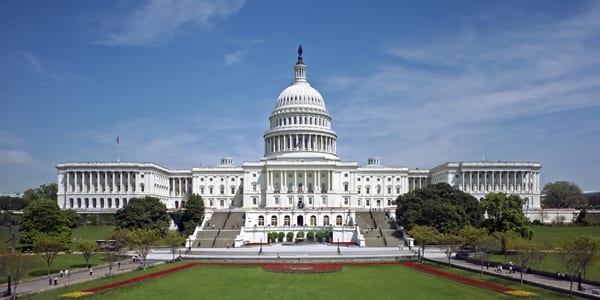 The State of the Union is more than just a speech. It is a chance for the President to rally his Congressional supporters and the American people behind the policy goals he has set for the coming year. Transforming a speech into action is difficult for every President, and this year’s State of the Union is no different.
The State of the Union is more than just a speech. It is a chance for the President to rally his Congressional supporters and the American people behind the policy goals he has set for the coming year. Transforming a speech into action is difficult for every President, and this year’s State of the Union is no different.
There are a few key learnings we can keep in mind, especially for communicators, as the President’s speech will be dissected and reviewed over the coming days:
The news cycle has accelerated to a breakneck pace.
It used to be that a top story dominated the news cycle for days. The State of the Union would be good for a week or more of coverage and analysis. Today, even this crown jewel of Washington political theater can get lost in the shuffle of the 24-hour news cycle. The older, slower news cycle had its positives and negatives – a positive story would last longer, allowing organizations and individuals to garner a halo-effect. On the flipside, negative stories tended to linger and could cause permanent damage to a subject’s overall reputation among stakeholder audiences, such as shareholders, consumers and influencers. Now, however, the news cycle has accelerated to “Trump-speed” – a sensory overload of multiple big stories breaking within hours of each other.
Implication: Communicators must be prepared to adapt to creating strategic and impactful media moments that remain in the collective consciousness of their target audiences. At the same time, communicators must recognize how challenging this is and effectively manage expectations. Conversely, when negative news presents itself, communicators must work quickly to authentically address and neutralize the situation to ensure they are protecting their organization’s reputational value.
There is a taxonomy to most of President Trump’s tweets.
A year ago, many were clamoring to create plans to prepare their organizations for the unpredictable “Trump Tweet” that might be lobbed at their direction. Now, thanks in part to the analysis provided by experts such as cognitive linguist George Lakoff, communicators can understand some of the methods President Trump deploys when he turns to Twitter. Lakoff contends, President Trump’s tweets fall into four categories: pre-emptive framing (being the first to frame an idea); diversion (shift attention to other issues); deflection (changing the direction of the news cycle by drawing attention to the messenger) and trial balloon (testing public opinion).
Implication: While President Trump is using Twitter as a means to drive the news cycle and reach his target audiences, this non-traditional approach is one that carries risk if not executed strategically. The Trump Administration dominates news coverage, but the sentiment of the coverage is largely negative. According to Pew Research Center, two-thirds of news stories about President Trump from his first 60 days in office were negative — more than twice the negativity seen in stories from the first 60 days of Bill Clinton, George W. Bush or Barack Obama’s presidencies. Quality messages aligned with your narrative are more impactful than volume when it comes to media mentions.
The need for narrative development and external alignment is critical.
Over the past year, we’ve watched President Trump, his cabinet members, Republican leaders in Congress and other key stakeholders who should be aligned with the administration, make contradictory statements on various issues. That is what is intriguing about the President’s scripted speeches like the State of the Union – it provides a message map and list of priorities for his supporters to follow and for others to measure him against. Whether or not everyone sticks to the proverbial script will impact the perception of the effectiveness of an organization.
Implication: It is important to have cross-function alignment with communicators, government relations, public affairs, operations, finance and others sharing their goals and messaging for both internal and external audiences to minimize risk. Companies and organizations should evaluate internal plans and activations to ensure they are still relevant and strategically implemented. Organizations should decide if they are going to comment on social and policy issues. If they do, they must be clear in their statements and aligned with the mission, values and workforce of their organization.
There is always much to learn from the evolving communications landscape in Washington and from key moments in time like the State of the Union address. It’s important to be flexible and nimble given the pace of the news cycle. Social and digital media are a strategic way to directly reach audiences and capture mindshare. Most importantly, an authentic narrative and strategic message deployment remain critical components to successful communications efforts.


